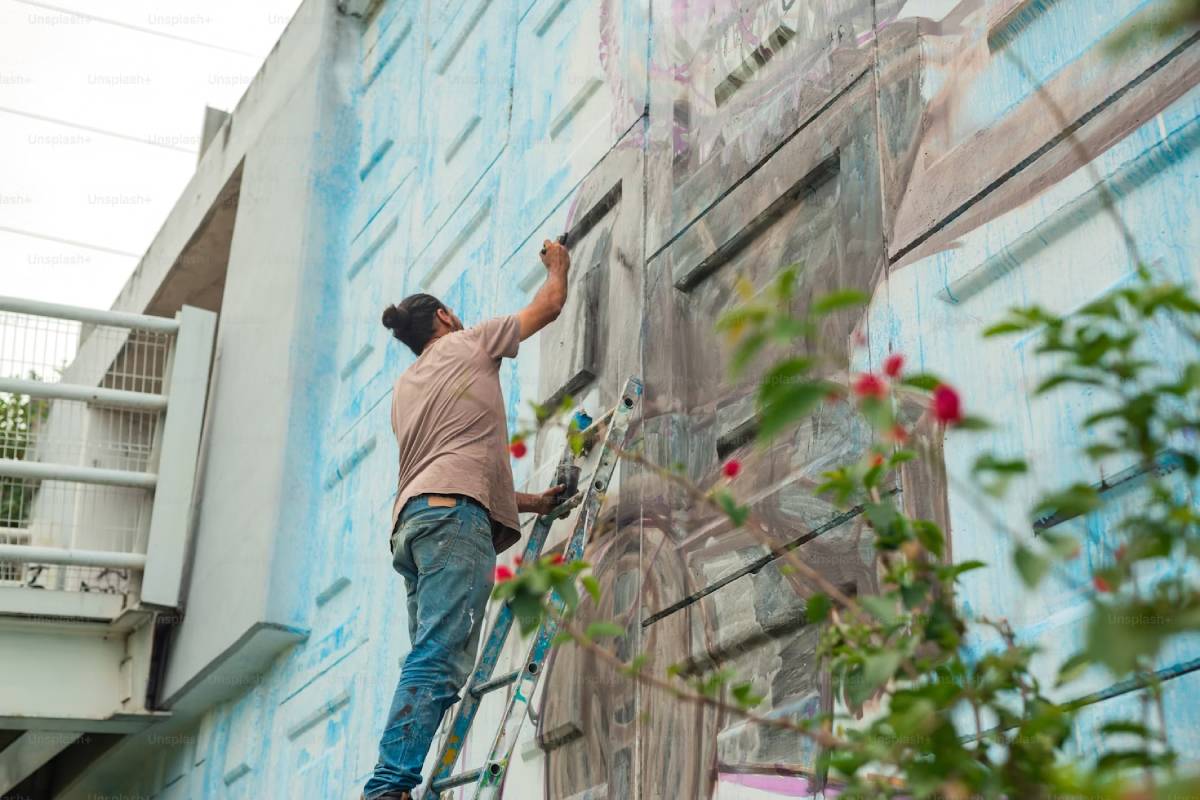
Sustainable Paints and Finishes for Eco Homes
When you think about constructing or furnishing an environmentally conscious home, you might start with solar panels, energy-efficient windows , or reclaimed wood. But have you thought of the effect your paint and finishes have on the environment? Most traditional paints are full of VOCs, or volatile organic compounds, that off-gas harmful emissions into your home environment, impacting indoor air quality and the health of the planet.
In sustainable home design, you’ll find green, eco-friendly paints and finishes that have become increasingly popular with homeowners to design healthy, stylish, and sustainable spaces. Whether you are outfitting one room or planning a total renovation, knowing your options can make all the difference. This guide will cover what makes paint sustainable, the advantages of green finishes, and the top eco-friendly picks for your home.
What Makes Paint Eco-Friendly?
Not all paints are created equal. Here’s what sets eco-friendly paints apart from their traditional counterparts:
Low or Zero VOCs
Volatile Organic Compounds (VOCs) are chemicals released into the air as paint dries. They contribute to indoor air pollution and are linked to respiratory issues, headaches, and long-term health risks.
- Low-VOC paints contain fewer of these harmful compounds.
- Zero-VOC paints are the healthiest option, especially for households with children, pets, or allergy sufferers.
Natural Ingredients
Many sustainable paints use plant-based binders, clay, chalk, and other natural minerals instead of synthetic chemicals. These ingredients are biodegradable, non-toxic, and safer for humans and the environment.
Sustainable Production and Packaging
Brands that offer eco paints often focus on the following:
- Responsible sourcing of raw materials
- Renewable energy use during manufacturing
- Recyclable or biodegradable packaging
Certifications to Look For
To ensure you’re choosing a truly green product, look for certifications such as:
- EU Ecolabel
- Green Seal
- LEED credits
- GREENGUARD Certification
Benefits of Eco-Friendly Paints and Finishes
1. Improved Indoor Air Quality
Choosing sustainable paints reduces exposure to VOCs, making your home healthier. Good indoor air quality is linked to better sleep, fewer allergies, and overall well-being.
2. Environmental Impact
Traditional paint manufacturing and application contribute to air and water pollution. Green alternatives are designed to minimise ecological damage.
3. Safe for All Occupants
Because they lack harmful chemicals, eco paints are safe for:
- Pregnant women
- Children
- Pets
- People with respiratory conditions
4. High Performance and Aesthetic Appeal
Modern sustainable paints offer various colours, textures, and finishes that rival or exceed traditional products.
5. Longevity and Durability
Many eco paints boast excellent coverage, reduced need for reapplication, and long-lasting finishes, making them cost-effective and sustainable in the long run.
Types of Sustainable Paints

1. Water-Based Paints
These are widely available and have much lower VOC content than oil-based paints. They dry faster, emit fewer odours, and are easier to clean.
2. Plant-Based Paints
Plant-based paints, made from ingredients like linseed oil, citrus peel oil, and natural resins, are biodegradable and safe.
3. Clay Paints
Derived from natural earth materials, clay paints offer a matte, textured finish and help regulate humidity.
4. Milk Paints
A traditional and entirely natural option made from milk protein (casein), lime, and pigments. They are biodegradable and emit no toxic fumes.
5. Lime Washes
Lime-based finishes provide an elegant, old-world aesthetic. They are naturally anti-bacterial and anti-fungal, making them great for damp areas.
Choosing the Right Finish
Matte vs. Satin vs. Gloss
The finish of your paint affects both appearance and functionality.
- Matte: Soft, non-reflective. Ideal for bedrooms and ceilings.
- Satin: Slight sheen, easy to clean. Great for living rooms and hallways.
- Gloss: Highly reflective and durable. Best for kitchens and bathrooms.
Consider Room Usage
Consider how much traffic a room gets and what kind of wear and tear surfaces may endure. For example:
- Children’s rooms: Choose a washable, durable finish.
- Bathrooms: Go for moisture-resistant lime or satin finishes.
- Living rooms: Matte or satin finishes offer the right balance of beauty and function.

Top Brands Offering Eco-Friendly Paints in the UK
1. Earthborn Paints
- VOC-free and certified by the EU Ecolabel
- Offers clay-based and breathable paints
- Broad colour palette with contemporary shades
2. Little Greene
- Low-VOC, child-safe, and water-based options
- Partnered with the National Trust for Heritage Colours
3. Graphenstone
- Uses lime and graphene to create tough, sustainable paints
- Cradle to Cradle certified
4. Farrow & Ball (Eco Range)
- Reformulated to be eco-conscious while maintaining rich colours and premium quality
5. Auro Paints
- 100% natural ingredients
- Suitable for allergy sufferers
- Biodegradable packaging
Practical Tips for Painting Sustainably
1. Calculate Precisely
Avoid overbuying. Use online paint calculators to determine how much you need based on room dimensions.
2. Prepare Surfaces with Green Products
Use eco-friendly primers and fillers that are also low in VOCs.
3. Dispose Responsibly
Never pour leftover paint down the drain. Many councils offer disposal services or paint recycling schemes.
4. Use Sustainable Tools
Choose paintbrushes and rollers made from recycled or biodegradable materials. Opt for reusable drop cloths instead of plastic sheeting.
5. Maximise Natural Light
Lighter shades of eco-paint can enhance natural light, reducing your reliance on electricity.
Common Concerns and Solutions About Eco-Friendly Paints
Q: Are eco paints more expensive?
A: Some eco-friendly paints may initially cost more, but their durability and reduced health impact often make them more cost-effective over time.
Q: Do eco paints perform as well as traditional ones?
A: Yes. Many sustainable paints offer excellent coverage, durability, and finish, rivalling mainstream brands.
Q: Are there eco-friendly options for outdoor painting?
A: Absolutely. Brands like Auro and Graphenstone offer weather-resistant options for external walls and woodwork.
Q: How do I verify a paint’s sustainability claims?
A: Look for third-party certifications and research the brand’s manufacturing and sourcing practices.
Painting a Greener Future
Selecting sustainable paints and finishes is a simple yet significant step in the journey to eco-friendly living. These products help you maintain a healthier home environment while reducing your impact on the planet and encouraging responsible manufacturing processes.
From traditional milk paints that have endured through generations to contemporary graphene-boosted systems, there’s never been a better time to embrace eco-friendly painting alternatives. With increasing availability and competitive performance, there has never been a reason to skimp on either style or durability.
But if you are unsure, start small—see how you go repainting one room with an eco-product. You’ll probably feel the difference in air quality, aesthetics, and peace of mind.
Are you ready to add a touch of green to your home? A bit of research into your local suppliers or internet eco-paint vendors will provide you with a brand that you can relate to. Sustainable in some cases, sustainable arts at home — with the flick of a brushstroke in some cases.

